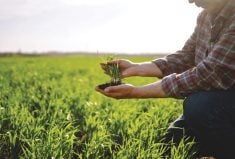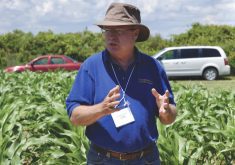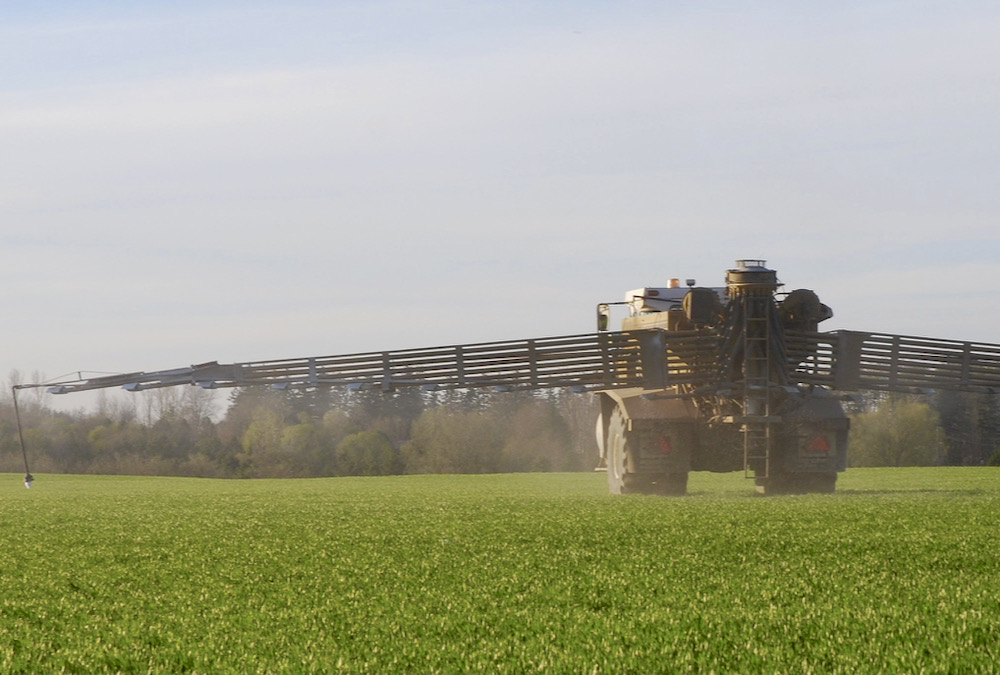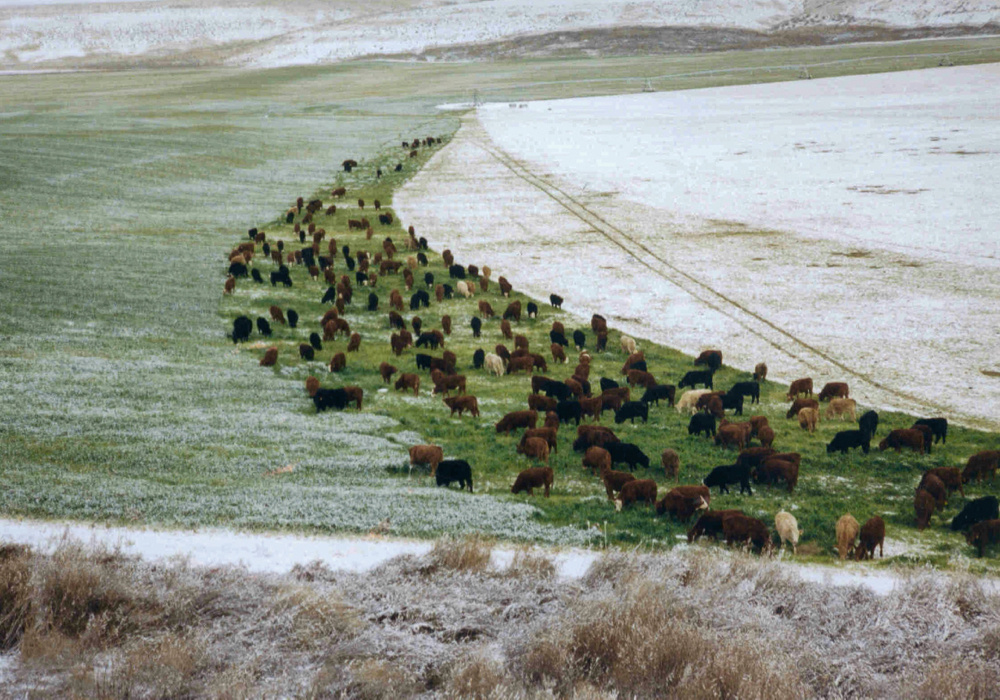Iké Nault regularly stops his ATV on a 25-acre freshly cut hayfield belonging to a producer from Howick, 30 kilometres south of Montreal. Probe in hand, the young technician methodically collects soil samples. Each stop is georeferenced as a green dot on a field map on his cellphone screen.
It really is “space age” technology, because in 2020, a metal hand on the Curiosity robot, 560 million kilometres from Earth, will take a soil sample on the surface of Mars using the same science, called laser-induced plasma spectroscopy. But Nault is using an even more sophisticated version developed by Logiag, a company based in Chateauguay, Que.
“We were inspired by the mining industry,” says Iké’s father Jacques Nault, an agrologist and Logiag’s vice-president. The mining industry had been using laser technology to detect the presence of copper in ore samples, but it did not indicate the quantity. That required excavation and further testing to determine whether a deposit is economic. Working with the National Research Council in Boucherville, Que., Logiag developed the laser technology so that it could precisely measure all the mineral contents as well as organic matter of a soil sample.

“NRC researchers had embraced this incredible challenge to develop a laser capable of analyzing the soil matrix,” says Nault. He also credits the perseverance of Logiag’s research director Dr. Luc English, who used his knowledge of medical spectroscopy to develop the Logiag system. The development took five years and $2 million in investments from various sources including Business Development Canada and Investissements Québec.
Named SOLID for the contraction of the words “soil” and “identification,” the system is now patent-protected in 148 countries.
Once Iké Nault has collected his soil samples in small cups identified with a bar code, he scans them with his cellphone. He then brings his samples to Logiag’s laboratory in Boucherville where each cup is scanned with the SOLID laser beam, which heats the sample to a temperature between 20,000 C and 25,000 C. “This tremendeous heat creates a plasma where the electrons are freed from their orbit,” says Jacques Nault. “The energy released by these electrons allows us to identify different atoms in the sample.”
Each sample is bombarded 3,000 times by the laser beam to make 100 analyses per second. All the elements from the periodic table, including nitrogen, phosphorus and potash, are identified and quantified.
“We are the new field of atomic analysis,” says Nault. “There is no longer the need for chemical products, beakers and flasks, used up until now by conventional laboratories to do soil analysis.”

According to Nault, the old method allowed a margin of error of 25 per cent, while SOLID’s margin is only five per cent. In addition, Logiag clients can expect their results and recommendations within three days instead of two weeks or more with the conventional soil analysis system.
The SOLID system is intended primarily for crop advisers and service providers.
“Logiag is a kind of back office rather than a direct service offered to the producers,” Nault says.
Dairy farmer Alain Rouleau, whose hayfield is being tested by Iké Nault, says he likes the Logiag system.
“It all starts with the quality of my soils. That’s what creates the quality of my forages, which in turn keep my herd healthy,” Rouleau says.
The speed of the analysis and recommendations is key for this dairy producer, who every year limes one-sixth of his 300 acres. Quebec’s rainy climate tends to acidify the soils. Rouleau says that by having his lime recommendations two or three days after harvesting hay, oats or wheat, instead of waiting two or three weeks for the conventional soil analysis, he can better plan his field work, including crop rotations.

“I manage my fields like my group of cows, or even cow by cow,” he says. Rouleau estimates that he spends $3,000 per year to lime 50 acres, so every penny counts.
Logiag’s SOLID soil service analysis was officially launched on September 1, after being tested among 20 of the company’s 4,000 clients. Logiag is waiting for its official credentials from the provincial accreditation agency, as well as its accreditation to the international ISO1705 standard. “We should obtain these accreditations within the next six to 12 months,” Nault says.
The system has already won a provincial innovation award, and attracted interest from outside Quebec. Logiag was also invited to participate in the Ag Innovation Showcase in St. Louis, Missouri, last September.
Read Also

Could crop sharing be a viable option for your farm?
Crop sharing could be a good option for young and beginning farmers.
“We met with the industry top players and we are following up the discussions to develop our market,” Nault says.















